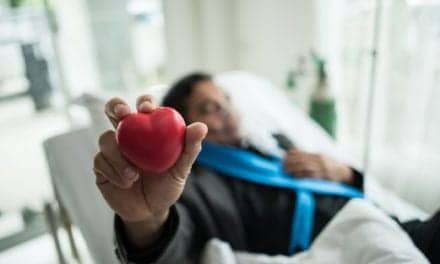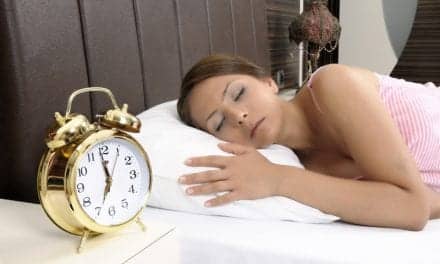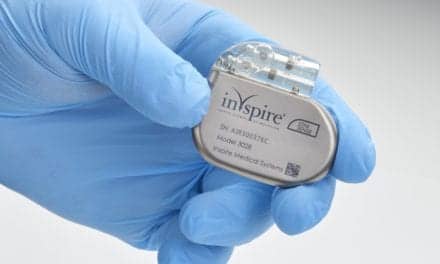And what can dental sleep medicine do to shorten time to treatment?
By Sherree Geyer
Eighty-two percent of sleep physicians cite a lengthy time to treatment as a barrier to increasing their prescriptions for oral appliance therapy for obstructive sleep apnea (OSA). This is a finding of a survey of more than 100 sleep physicians commissioned by oral appliance maker ProSomnus Sleep Technologies and presented by its CEO Len Liptak, MBA, as an abstract at the American Academy of Dental Sleep Medicine 2021 virtual annual meeting.1
Liptak says two factors drive the perceived lag. “The first is the time for a patient to schedule an appointment with a therapy provider,” he says. “The second is initiation and titration of therapy. The lag exists with all therapy options but is a barrier to prescribing OAT [oral appliance therapy].”
Anecdotally, patients too may be impacted by delays between diagnosis and successful treatment. “Patients diagnosed with OSA are aware it’s a major health risk and that prescribed therapies are only effective if patients actively use the devices,” Liptak says. “There are reports of patients losing interest if the lag is too long or if it takes too many appointments to appropriately fit or titrate the devices.”
Reza Radmand, DMD, DABSM, a dentist at Advanced Dental Sleep Medicine, a multi-location practice in New England, says, “In my practice, 65% of my referrals from sleep physicians are for positive airway pressure-intolerant (PAP) patients. The average time it often takes for patients who are intolerant to PAP to schedule their first OAT appointment after referral by sleep physicians is about 18 months. This is an awfully long time for a patient with an active disease to go without treatment.”
Radmand, who is also a clinical instructor at the Yale School of Medicine and a member of the medical staff at Bridgeport Hospital in Connecticut, says reasons for the delay are multifactorial. “One factor involves medical insurance authorization and lack of familiarity, or desire, by the dental sleep offices with authorization and billing,” he says. “Additionally…some commercial insurance companies require patients to have failed or been deemed intolerant to PAP before moving on to OAT.”
Keith Thornton, DDS, DABDSM, a Dallas, Texas-based dentist and inventor of numerous devices that treat sleep-related breathing disorders including the TAP, says, “Due to the time and hassle of so many appointments with different providers, the patient can get very frustrated. This is particularly the case when CPAP fails since it is generally the therapy recommended by sleep physicians as a first step.
“Rarely does a patient get a referral for an oral appliance, and if they do, it is because the patient fails CPAP. Universally, this is not done in a timely manner to be paid by an insurance company or Medicare. In addition, there are significant barriers to payment by insurance companies for oral appliances that cause patients to lose interest for time and financial reasons.”
Radmand also notes that failure of CPAP can set up patients to expect failure. He says, “Psychologically, this causes them to think, ‘If the gold standard doesn’t work, what are the chances the next level treatment will?’”
Efficient Workflows Shorten Time to Treatment
In the ProSomnus survey, sleep physicians reported a willingness to treat a greater number of patients with oral appliance therapy if key barriers are addressed.1 By resolving the concerns, physicians may more quickly refer patients who are struggling with CPAP or those who indicate a preference for an oral appliance to a dentist for one, thereby addressing the first area where experts see a lag in time-to-treatment.
The top barrier, according to the survey, is lack of insurance coverage and reimbursement (94%). Tied for second are concerns about the unpredictable, variable performance of the OAT device (88%) and device side effects (88%). Liptak states in the abstract, “The clinically oriented barriers to prescribing more OAT (eg, insurance reimbursement, access to qualified dentists, etc) may be addressed through better advocacy and education. The OAT device specific barriers (compliance monitoring, unpredictable performance, side effects, etc) to more prescriptions may be addressed through better OAT device selection and advances in therapeutic, diagnostic and theragnostic technologies.”1
Technologies are advancing at a rapid pace, addressing the second area of potential delay. Liptak explains, “New technologies can shorten the time gap (to treatment) by weeks. Five years ago, it took a month to fabricate a custom OAT device. Today, modern custom devices are made in a matter of days. Advances in material science and device designs have improved quality, allowing OAT devices to be delivered and adjusted via telemedicine or with fewer appointments.”
For ProSomnus devices, because of precision manufacturing, artificial intelligence design, robotic engineering, and a digital workflow, this means the production turnaround time is about 7 business days. Liptak says, “Many dental sleep medicine providers report ProSomnus devices are delivered to their offices before they receive authorization from the insurance company.”
Thornton, owner of SleepWell Solutions in Dallas, also thinks technology, in particular telemedicine, can be utilized to speed the process. He adds, “Intraoral scanners will do the same for custom appliances.”
Thornton also has experienced success presumptively treating patients with obstructive sleep apnea symptoms for the disorder while waiting for diagnosis, thereby shortening time to therapy significantly. But this protocol could miss the diagnosis of other disorders, as well as be outside the scope of practice for dentists, other experts say. Still, Thornton says an effective trial oral appliance is “a great way to get [insurance[ approval of a custom appliance.”
“I use myTAP [an oral appliance by Airway Management Inc] for diagnostic, titration, and interim treatment. One of my assistants fits the device. The patient titrates themselves. We follow up with an overnight pulse oximeter if results are not successful. All of this can be done using telemedicine. This streamlines the process to one appointment with the patient walking out with a greater likelihood of success, particularly with compliance,” Thornton says.
Radmand has advice about addressing the payor-coverage barrier. He says, “Insurance companies continue to misinform patients about coverage for custom oral appliances. Dentists should take on more authorization and billing to take the burden off of patients.”
Dentists also must communicate these and other advances in the oral appliance therapy process to sleep physicians. “As dental sleep providers and educators, we must actively reach out to our MD colleagues and inform them of the scientific updates and equipment in the field of dental sleep medicine. Most physicians are only as knowledgeable about OAT as we provide them,” Radmand says. “Informing our referring MDs of our ability to efficiently and accurately care for our mutual patients, with the use of the most updated technology or methodology, will win them over.”
Sherree Geyer is an independent healthcare journalist based in Phoenix, Ariz. This is her first article for Sleep Review.
Reference
- Liptak L. What do we know about sleep medicine physicians? Journal of Dental Sleep Medicine. 2021 AADSM Virtual Annual Meeting Abstracts: Abstract #12.
Photo 142891783 © Andrii Yalanskyi | Dreamstime.com





